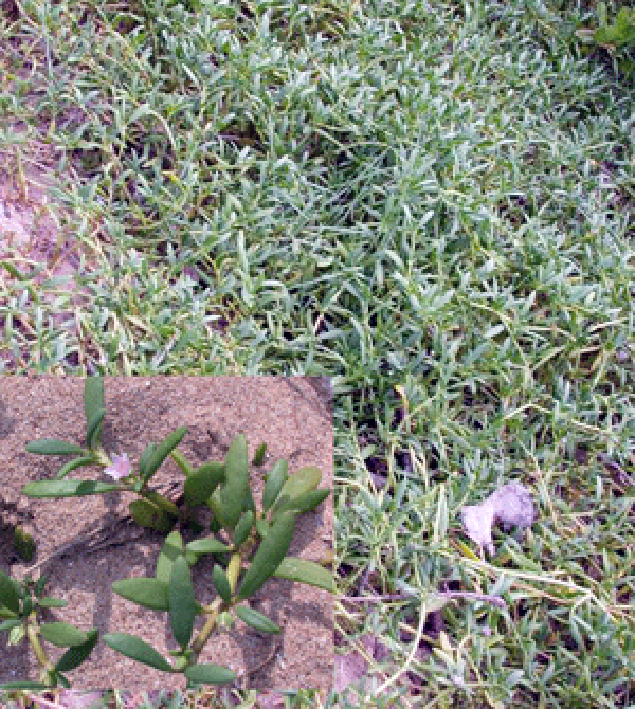 Stand of sea purslane (Halimione portulacoides),
Stand of sea purslane (Halimione portulacoides),including close-up of the plant, inset.
Welcome to the summary page for FabulousFusionFood's Cook's Guide entry for Sea Purslane along with all the Sea Purslane containing recipes presented on this site, with 5 recipes in total.
This is a continuation of an entire series of pages that will, I hope, allow my visitors to better navigate this site. As well as displaying recipes by name, country and region of origin I am now planning a whole series of pages where recipes can be located by meal type and main ingredient. This page gives a listing of all the Sea Purslane recipes added to this site.
These recipes, all contain Sea Purslane as a major wild food ingredient.
Sea Purslane, Halimione portulacoides, is a halophytic (salt-loving) shrub and a member of the Amaranthaceae (Amaranth) family. The plant is is a small greyish-green shrub (growing to about 75cm tall) widely distributed in temperate Eurasia and parts of Africa. It is generally found in salt marshes and coastal dunes and is usually flooded at hight tide.
It is an evergreen, and in northern temperate climates it flowers from July to September. The flowers are monoecious and are pollinated by wind. The silvery leaves of this plant indicate adaption for drought tolerance. The leaves of the plant are edible and can either be eaten raw in salads or they can be gently steamed. The leaves are thick and succulent with a crunchy texture and a natural saltiness.
This is a continuation of an entire series of pages that will, I hope, allow my visitors to better navigate this site. As well as displaying recipes by name, country and region of origin I am now planning a whole series of pages where recipes can be located by meal type and main ingredient. This page gives a listing of all the Sea Purslane recipes added to this site.
These recipes, all contain Sea Purslane as a major wild food ingredient.
Sea Purslane, Halimione portulacoides, is a halophytic (salt-loving) shrub and a member of the Amaranthaceae (Amaranth) family. The plant is is a small greyish-green shrub (growing to about 75cm tall) widely distributed in temperate Eurasia and parts of Africa. It is generally found in salt marshes and coastal dunes and is usually flooded at hight tide.
It is an evergreen, and in northern temperate climates it flowers from July to September. The flowers are monoecious and are pollinated by wind. The silvery leaves of this plant indicate adaption for drought tolerance. The leaves of the plant are edible and can either be eaten raw in salads or they can be gently steamed. The leaves are thick and succulent with a crunchy texture and a natural saltiness.
The alphabetical list of all Sea Purslane recipes on this site follows, (limited to 100 recipes per page). There are 5 recipes in total:
Page 1 of 1
| Pickled Sea Purslane Origin: Britain | Sea Purslane and Sea Rocket Purée Origin: Britain | Sea Purslane, Potatoes and Peas Origin: Britain |
| Pickled Sea Purslane II Origin: Britain | Sea Purslane Dhal Origin: Britain |
Page 1 of 1